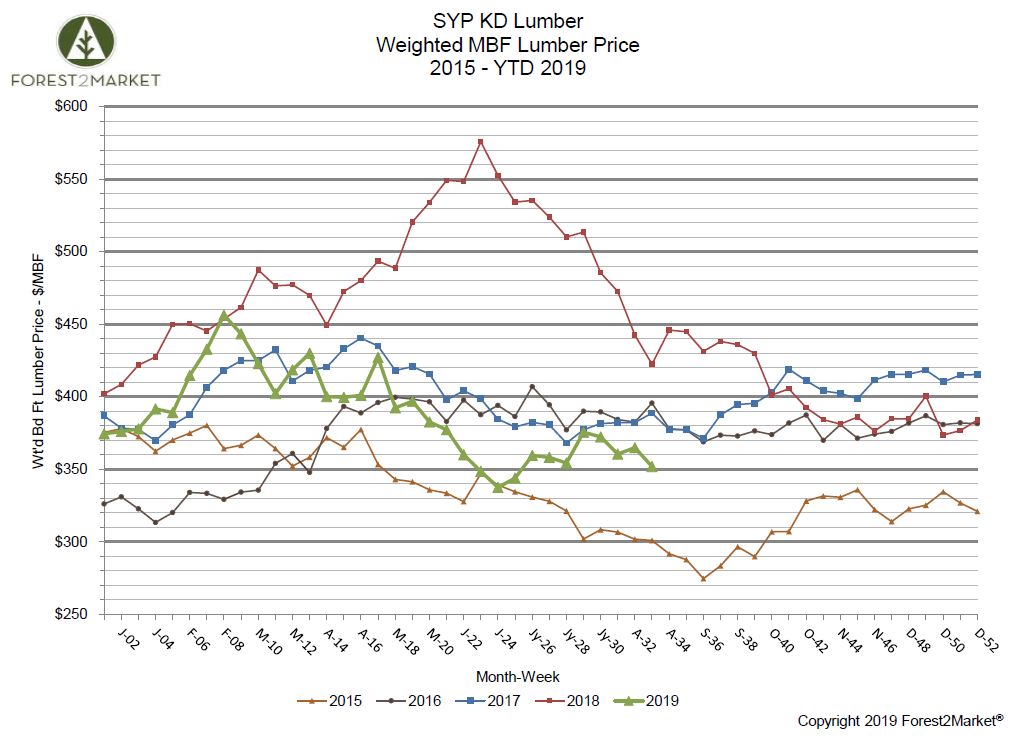
Southern yellow pine lumber prices gained some momentum in early July but have since meandered on a downward trend, illustrating the weakness seen in the new home construction market. Housing starts dropped 4% in July for the third straight month in a row, and the window for a temporary surge is quickly closing as we wave goodbye to the summer months—traditionally the busy building season.
Forest2Market’s composite southern yellow pine lumber price for the week ending August 23 (week 34) was $344/MBF, a 2.3% decrease from the previous week’s price of $352/MBF, but a 22.3% decrease from the same week in 2018.
- 1Q2019 Average Price: $410/MBF
- 2Q2019 Average Price: $379/MBF
- YTD Average Price: $386/MBF

Retail Impacts
Lumber futures contract prices on the Chicago Mercantile Exchange have fallen by nearly 50 percent since last July to roughly $350/MBF—the same level as Forest2Market’s current SYP composite price. Due to this slack demand for North American lumber, home improvement retail giant Home Depot recently cut its sales expectations for the year amid sinking prices and the potential impacts of the escalating tariffs on its customers.
"We are encouraged by the momentum we are seeing from our strategic investments and believe that the current health of the U.S. consumer and a stable housing environment continue to support our business," CEO Craig Menear said in a prepared statement. "That being said, lumber prices have declined significantly compared to last year, which impacts our sales growth. As a result, today we are updating our sales guidance to account primarily for continued lumber price deflation, as well as potential impacts to the U.S. consumer arising from recently announced tariffs."
While Home Depot beat second quarter profit expectations, the company’s warning about future sales is reflective of the concern and uncertainty many businesses are facing in the wake of the shifting trade war with China.
Notably, the Trump administration recently delayed most of the tariffs it planned to impose on Chinese goods and dropped other tariffs altogether. This may not be enough to ignite a late-season homebuilding rally, however. Despite low interest rates and plenty of demand, a confluence of factors—including high prices, lot/labor shortages, economic uncertainty and a presidential election on the horizon—is preventing momentum from building at the moment.





